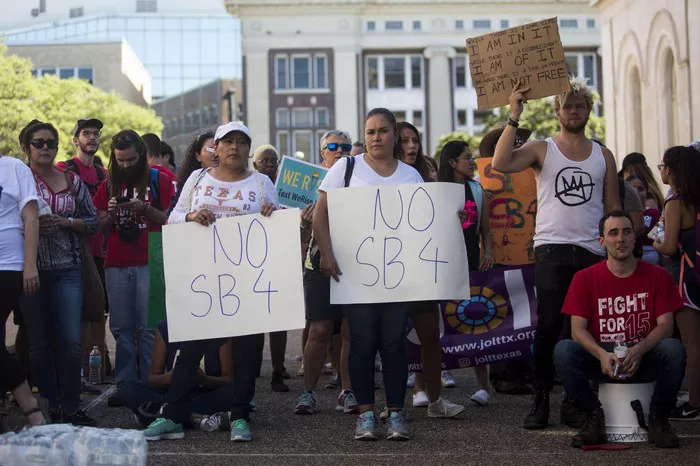The number of people entering the United States has surged in recent years, driven mainly by an influx of individuals categorized as “other foreign nationals” by the Congressional Budget Office (CBO). This group includes both those who have received permission to enter or stay in the country and those who have not. Based on pre-2020 trends, the CBO anticipated that net immigration in this category would average around 200,000 people per year. However, projections now estimate that net immigration will exceed this rate by a total of 8.7 million people between 2021 and 2026.
Impact on Budget and Economy Projections
In a new report, the CBO analyzes the effects of this immigration surge on federal budget and economic projections for the 2024–2034 period. The report focuses on the incremental impact of the surge rather than the effects of all immigrants. It specifically examines the surge’s effects on federal revenues, mandatory spending, and interest on the debt. The report does not provide detailed estimates of the impact on state and local budgets but offers a broad assessment of potential effects on federal discretionary funding.
To isolate the effects of the immigration increase, the CBO created a counterfactual scenario assuming no surge. Instead, net immigration in the “other foreign nationals” category was set at 200,000 people per year from 2021 to 2034. The agency then compared economic and budget projections for this scenario with its baseline projections, estimating the effects of the immigration surge.
Uncertainty in Estimates
The CBO acknowledges that its estimates of the surge’s impact on the federal budget and economy are highly uncertain. The agency will continue to evaluate new data as it becomes available.
Budgetary Effects
The increase in immigration boosts federal revenues, mandatory spending, and interest on the debt in the CBO’s baseline projections, resulting in a net reduction in deficits of $0.9 trillion over the 2024–2034 period. The budgetary effects stem from the increased number of people paying taxes and receiving federal benefits, as well as changes in the economy due to the surge. These changes include higher interest rates and increased productivity among non-surge workers.
The CBO projects that the immigration surge will add $1.2 trillion in federal revenues over the 2024–2034 period. Annual revenue increases, reaching $167 billion (2.2% of total revenues) in 2034. Individual income and payroll taxes paid by surge immigrants contribute most to this revenue increase. The surge is also expected to boost economic activity and, consequently, tax revenues.
The surge adds $0.3 trillion to outlays for federal mandatory programs and net interest spending over the same period. Annual outlays for certain mandatory programs increase as more surge immigrants and their U.S.-born children receive benefits. By 2034, these benefits add $23 billion (0.4% of total mandatory spending). Additionally, the economy-wide effects of the surge boost annual spending, reaching $27 billion in 2034. Most notably, interest spending on government debt increases due to higher interest rates. In total, projected outlays in 2034 are boosted by $50 billion because of the surge.
The CBO’s estimates do not include effects on discretionary spending, which is controlled by appropriation acts. However, the surge is expected to pressure the budgets of many programs funded through discretionary appropriations, including those administered by the Department of Homeland Security and the Office of Refugee Resettlement. In 2024, funding for certain discretionary immigration-related activities totaled $37 billion, a $1 billion increase from 2019 (adjusted for inflation). The Administration has requested additional funding for 2024.
The surge will also affect other discretionary programs impacted by population size, such as those funding education, income support, and infrastructure. If discretionary funding for these categories increased in proportion to the population surge, these increases would total $24 billion in 2034 and $0.2 trillion over the 2024–2034 period.
CBO’s estimates do not include discretionary funding because it depends on future legislative actions. Lawmakers could increase total appropriations or reallocate resources to accommodate the surge.
State and Local Budgets
The immigration surge will impact state and local budgets, with varying effects across jurisdictions. Research generally indicates that immigration increases state and local government costs more than revenues. The CBO expects this trend to continue with the current surge. While the surge population shares some characteristics with previously studied immigrant populations, it also has unique differences. The CBO has not fully analyzed the surge’s effects on state and local budgets.
Economic Effects
The projected budgetary effects partly stem from broader economic changes due to the surge. The CBO projects that the surge will increase total nominal GDP by $1.3 trillion (3.2%) in 2034 and by $8.9 trillion over the 2024–2034 period. The surge increases annual wages, reaching about 3% growth by 2034. These additional wages significantly boost revenues as they are subject to payroll and income taxes.
Two main factors drive the economic impact: faster labor force growth and greater residential investment demand, which boost the rate of return on capital and push interest rates higher. These higher rates significantly increase federal spending.
In the labor market, wages for surge workers start below those of other U.S. workers with similar education levels but converge over time. Until 2026, wage growth for non-surge workers is slightly less than it would be without the surge, particularly for those with 12 or fewer years of education. This trend reverses in later years, with wage growth for non-surge workers increasing slightly due to higher innovation-related productivity and the increased demand for more-educated workers to complement the less-educated surge population.


